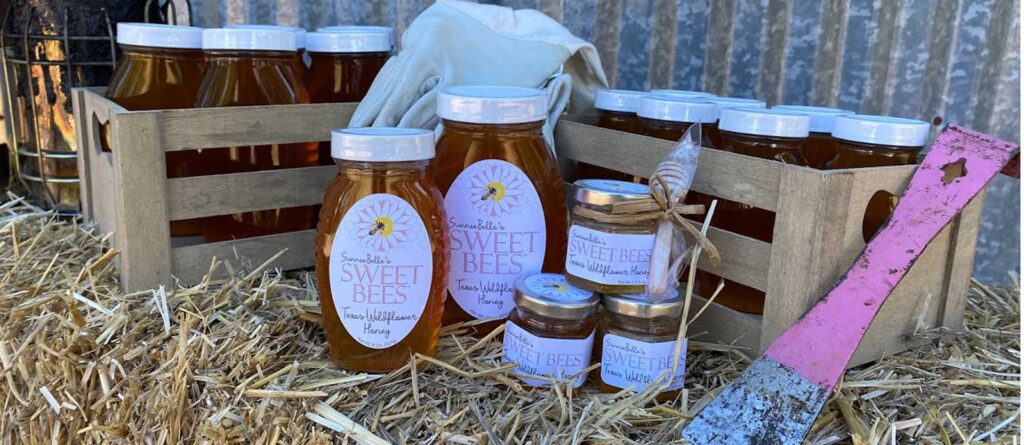Welcome to SunnieBelle’s apiary, home of the Sweet Bees! Currently we have eight hives of European honey bees. They are Italian-Carniolan hybrid, developed by Texas bee Supply for both gentleness and good honey production.
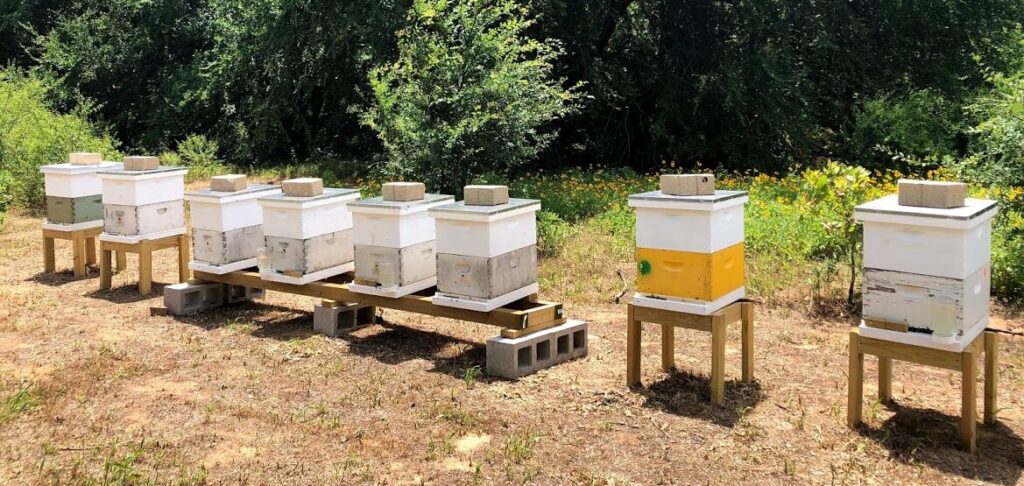
A few of the hives. 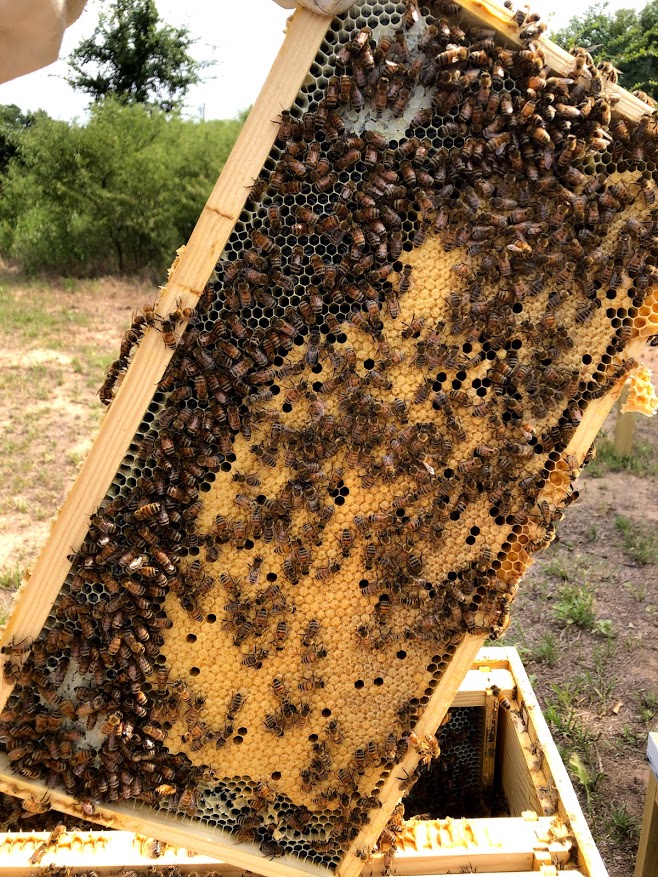
Cells of baby bees waiting to be born!
Our bees are located on an 11-acre former cattle farm in Pottsboro, Texas. The land backs up to a forested area beyond which is an inlet of Lake Texoma. It is a lovely secluded place with lots of songbirds and wildlife. We have returned approximately 7 acres of the pasture to it’s natural tall-grass prairie state. This allows many nectar and pollen sources such as native wildflowers, shrubs and trees to flourish, thus helping our bees to make great tasting honey! (Check out SunnieBelle’s Garden page to see a few of our bees’ nectar sources.)
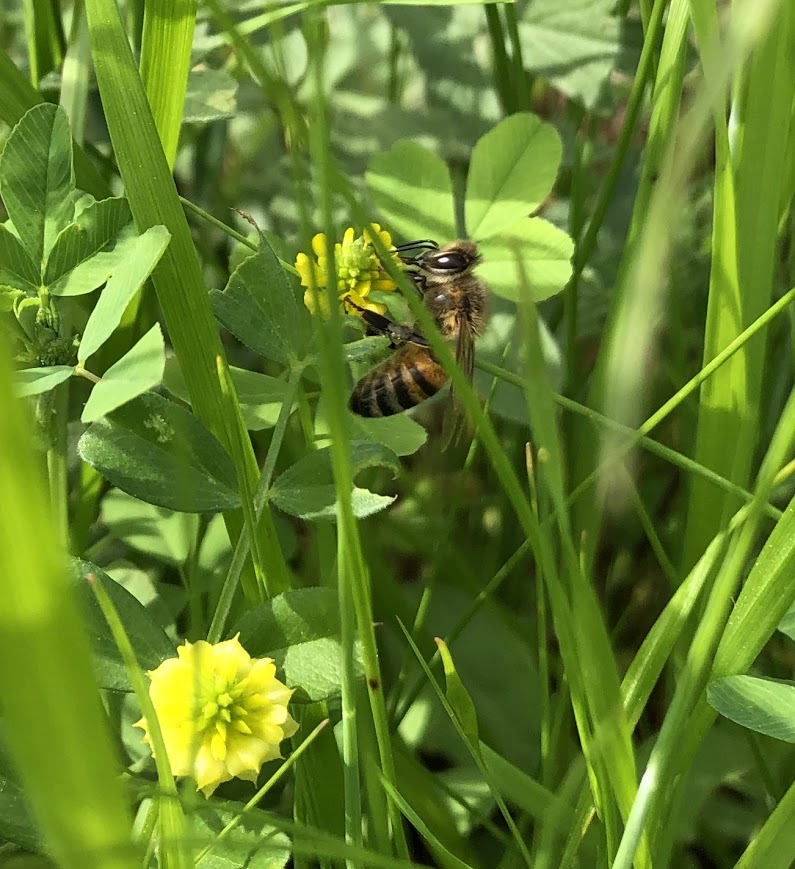
Black Medick 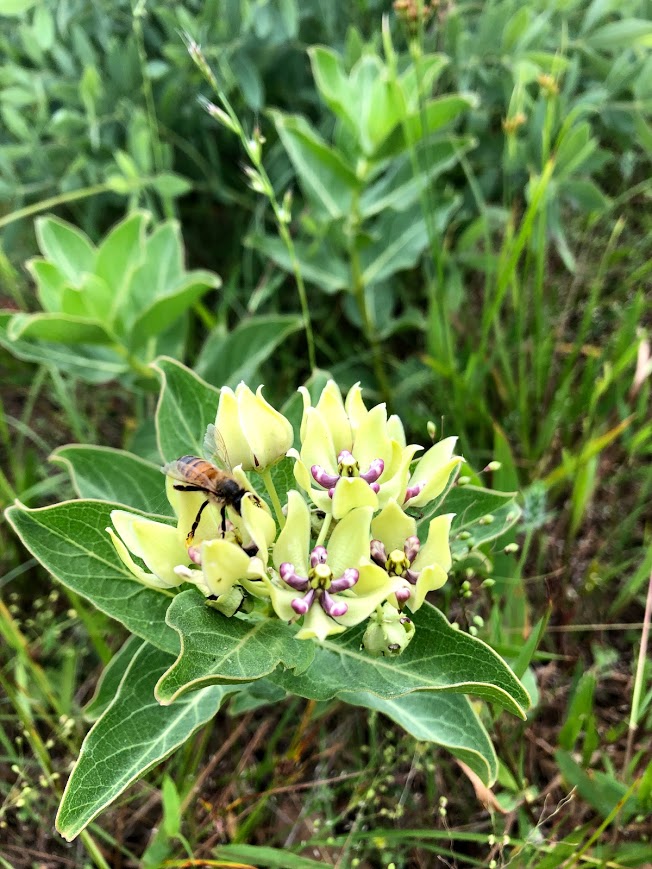
Common Milkweed
After the bees have done their thing with the collected nectar and pollen and placed it in the honeycomb, they let it dehydrate it to 18% or less water (sometimes they help by fanning their wings at the hive entrance to create more air flow — how are they so smart?!!) then cap it over with more wax. They do this for storage and this is how us beekeepers know when it’s ready to harvest.
Note: Contrary to popular belief, honey is not “bee poop”. I could write a long, drawn-out explanation about how bees make honey but to keep things simple let’s just say they use it for food. If it was poop, they probably wouldn’t eat it!
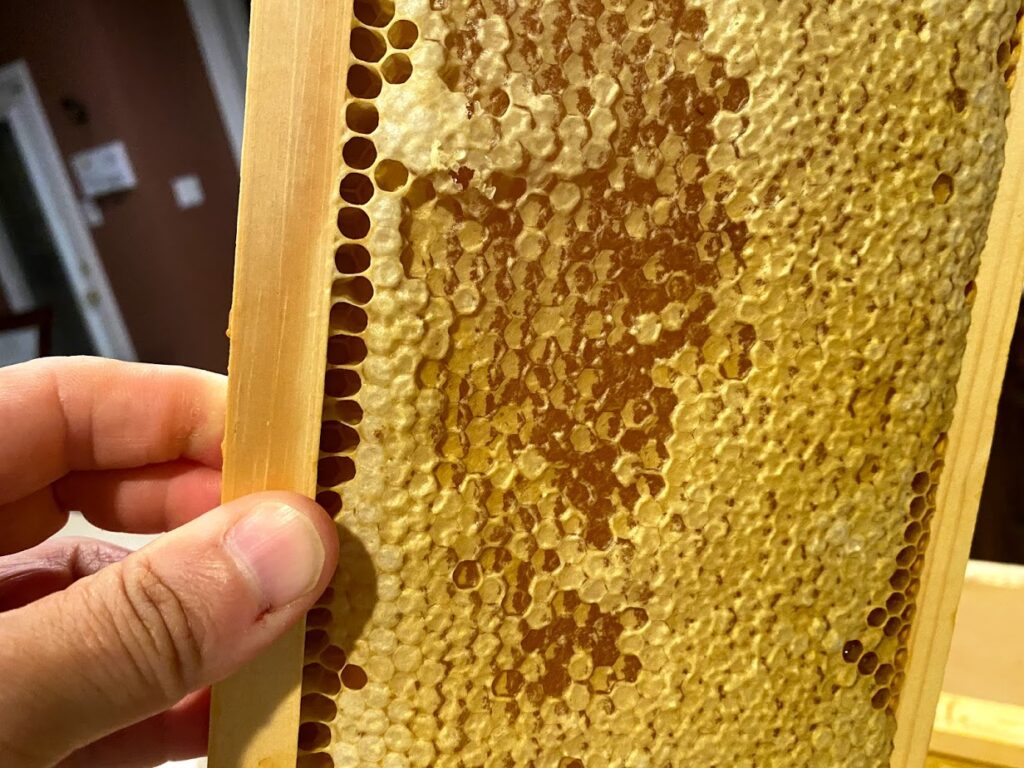
Frame of capped honey 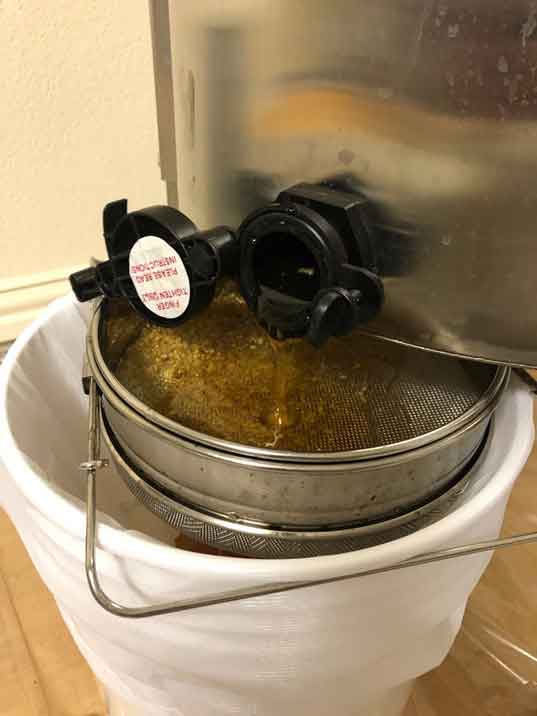
Extraction and light filtering
Then begins the fun part! After collecting the frames of capped honey from the hives, we scratch open the cappings and place the frames in the extractor. This spins the frames and the honey is extracted by centrifugal force. As it exits the extractor we filter it lightly to keep out the excess wax and pollen chunks. But that’s it! After that it is bottled, sealed and ready to go!
We do not heat or add anything to the honey, therefore sometimes crystallization may appear in a bottle or two. This doesn’t mean the honey is bad, just that it either got a little chilled at some point or the nectar the bees used for that batch had a higher sugar concentration. To return it to it’s liquid form, simply warm a cup of water (does not need to be boiling) and place the bottle in for a few minutes. Continue warming until the crystals dissolve.
Thanks for visiting! SunnieBelle’s Sweet Bees hope you enjoy their honey!
